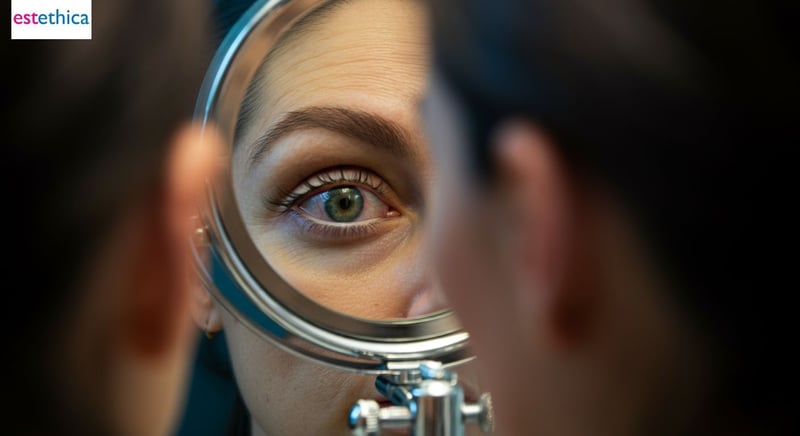Unlock Youthful Eyes: Expert Blepharoplasty Guide
Unlock youthful eyes with our expert guide: Understand blepharoplasty, recovery tips, and non-surgical options with estethica.
Discover the transformative power of blepharoplasty, an eyelid surgery designed to rejuvenate your appearance. This comprehensive guide unveils key insights into the procedure, ensuring prospective patients are well-informed. As you embark on this journey towards youthful eyes, learn about recovery tips, surgeon selection, and explore non-surgical alternatives with estethica, a leader in healthcare with a patient-first approach.
Understanding Blepharoplasty: What You Need to Know
Exploring the Procedure: Steps and Considerations
Blepharoplasty, commonly referred to as eyelid surgery, involves several critical steps. Initially, the surgeon evaluates the patient's eyelid structure to determine the best approach. This assessment is crucial for tailoring the procedure to individual needs, ensuring both aesthetic and functional improvements.
- Consultation and Evaluation: The surgeon examines eyelid anatomy and discusses goals.
- Anesthesia Selection: Options include local anesthesia with sedation or general anesthesia.
- Surgical Procedure: Excess skin, muscle, or fat is carefully removed or repositioned.
Understanding these steps helps patients set realistic expectations and prepare for the procedure. For more detailed insights, visit Blepharoplasty: Transform Your Look Safely.
Key Benefits of Blepharoplasty
- Improved Vision: Removing droopy eyelids can enhance peripheral vision.
- Younger Appearance: The procedure often results in a more youthful look.
- Boosted Confidence: Many patients report increased self-esteem post-surgery.
These benefits highlight why blepharoplasty is a popular choice for those seeking both cosmetic and functional improvements. By understanding the procedure and its advantages, individuals can make informed decisions about their cosmetic eye surgery options.

Navigating Blepharoplasty Recovery: Tips for Success
Managing Post-Surgery Expectations
After undergoing blepharoplasty, also known as eyelid surgery, it's crucial to manage expectations regarding recovery. Swelling and bruising are common, but they typically subside within two weeks. Patients should follow their surgeon's advice closely to ensure optimal healing and results.
- Swelling Reduction: Applying cold compresses can help minimize swelling.
- Medication Adherence: Taking prescribed medications aids in reducing discomfort.
- Follow-Up Appointments: Regular check-ups are essential for monitoring progress.
These steps are vital for a smooth recovery, ensuring that patients achieve the desired outcomes from their cosmetic eye surgery.
Understanding the Cost Factors
While the cost of eyelid surgery varies, it's influenced by several factors, including the surgeon's expertise and the complexity of the procedure. Patients should focus on the quality of care and the surgeon's credentials rather than price alone to ensure the best results.
- Surgeon's Experience: Highly skilled surgeons may charge more due to their expertise.
- Procedure Complexity: More intricate surgeries can increase costs.
- Geographical Location: Prices may vary based on the clinic's location.
Understanding these factors helps patients make informed decisions without focusing solely on cost, ensuring a successful blepharoplasty experience.

Choosing the Best Blepharoplasty Surgeon for You
Evaluating Surgeon Credentials and Experience
When selecting a surgeon for your blepharoplasty, it's crucial to evaluate their credentials and experience. A board-certified surgeon with a specialization in cosmetic eye surgery ensures a higher standard of care. For instance, a surgeon with extensive experience in both upper and lower eyelid surgery can provide tailored solutions for your specific needs.
- Board Certification: Verify the surgeon's certification in plastic or ophthalmic surgery.
- Specialization: Look for surgeons specializing in eyelid lift and under eye operations.
- Track Record: Consider the surgeon's history of successful procedures and patient satisfaction.
These factors are essential in ensuring that you choose a surgeon who can deliver both aesthetic and functional results, minimizing the risk of complications such as blepharoplasty gone wrong pictures.
Consultation Process and Patient Reviews
The consultation process is a vital step in selecting the best blepharoplasty surgeon. During consultations, assess the surgeon's communication skills and willingness to address your concerns. Additionally, patient reviews provide valuable insights into the surgeon's reputation and the quality of their work.
- Initial Consultation: Discuss your goals and evaluate the surgeon's approach to your case.
- Review Feedback: Analyze patient testimonials for insights into the surgeon's expertise.
- Multiple Opinions: Consult with several surgeons to compare their recommendations and comfort levels.
By thoroughly researching and consulting multiple practitioners, you can confidently choose a surgeon who aligns with your expectations and ensures a successful cosmetic eye surgery experience.

Exploring Non-Surgical Eyelid Lift Alternatives
Understanding Non-Surgical Options
For individuals hesitant about traditional blepharoplasty, non-surgical alternatives offer appealing solutions. Laser treatments and injectable fillers are popular choices for those seeking temporary eyelid rejuvenation. These methods provide subtle enhancements without the need for surgery, making them ideal for those with busy lifestyles or those who prefer less invasive procedures.
- Laser Treatments: These can tighten skin and reduce fine lines around the eyes.
- Injectable Fillers: Fillers can add volume and smooth out wrinkles, offering a refreshed look.
- Minimal Downtime: Non-surgical options typically require little to no recovery time.
These options allow patients to explore cosmetic eye surgery alternatives that align with their personal preferences and schedules.
Factors Influencing Non-Surgical Choices
Choosing between non-surgical eyelid lift alternatives involves considering several factors. Patients should evaluate their aesthetic goals, lifestyle, and the longevity of results. While non-surgical methods offer temporary improvements, they can be a practical choice for those seeking immediate, albeit short-term, enhancements.
- Goal Assessment: Determine if temporary results align with your long-term aesthetic objectives.
- Lifestyle Consideration: Evaluate if minimal downtime suits your daily activities.
- Result Longevity: Understand that non-surgical results may require regular maintenance.
By weighing these factors, individuals can make informed decisions about their cosmetic eye surgery options, ensuring they choose the best path for their unique needs and expectations.
Innovative Blepharoplasty Techniques for Youthful Eyes
Excellence in Blepharoplasty Recovery and Results
Frequently Asked Questions
What is blepharoplasty and how does it improve appearance?
What should I expect during the blepharoplasty recovery time?
How do I choose the best blepharoplasty surgeon for my needs?
Are there non-surgical alternatives to eyelid lifts?
What are the potential risks of blepharoplasty?
Discover the Path to Your Healthiest Self with estethica's Award-Winning Services!
📞 Call Now for a Free Consultation!